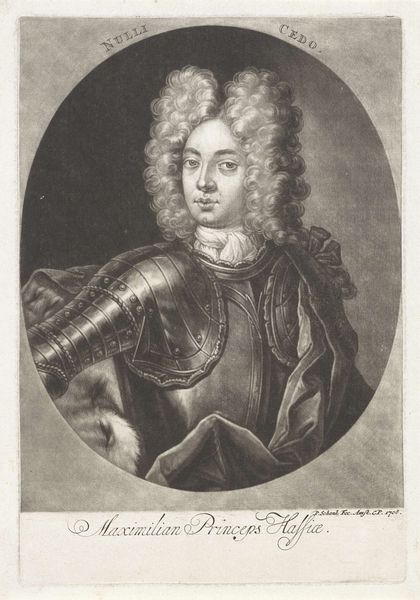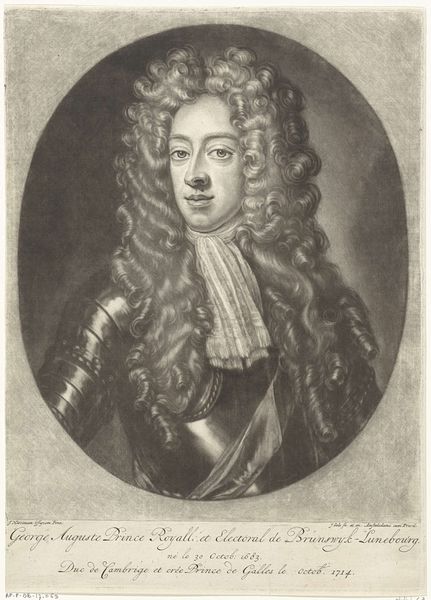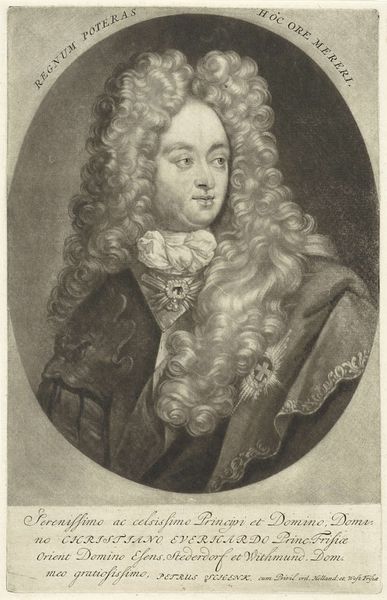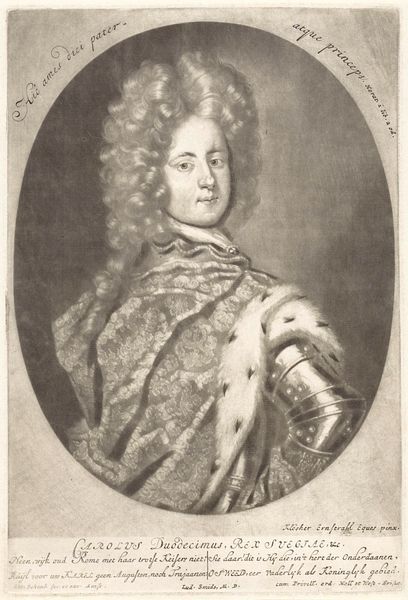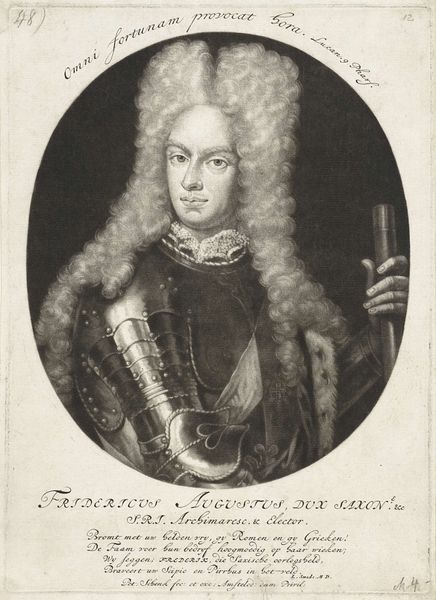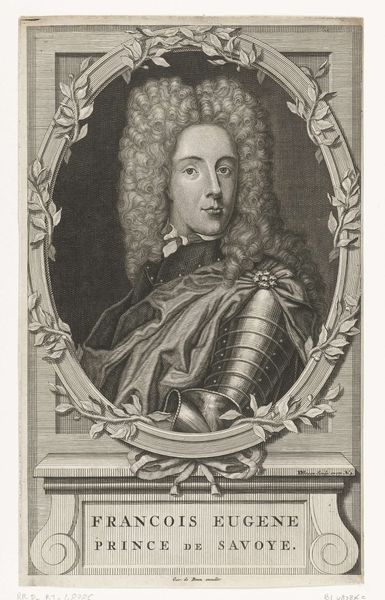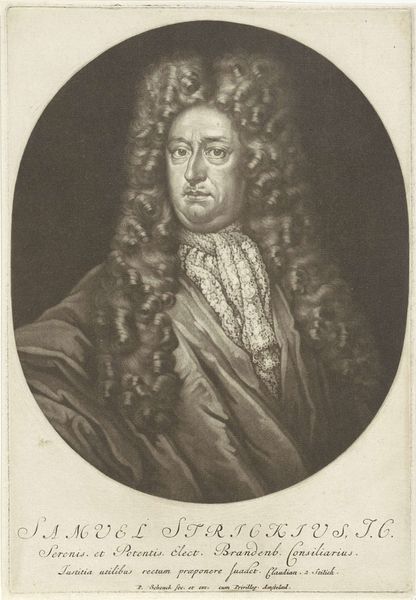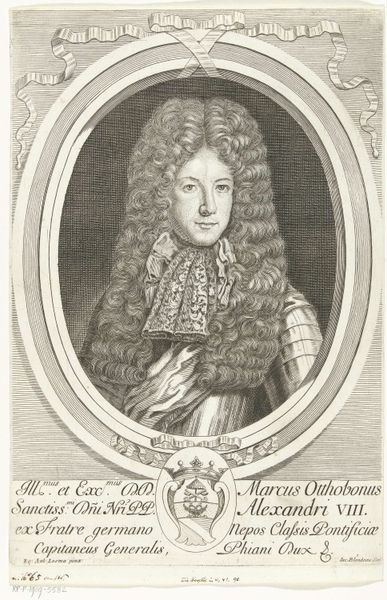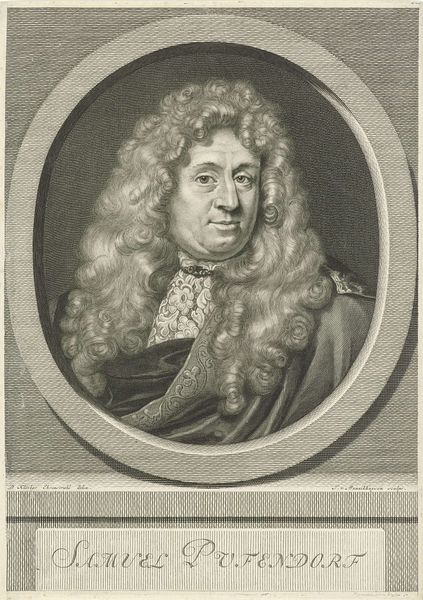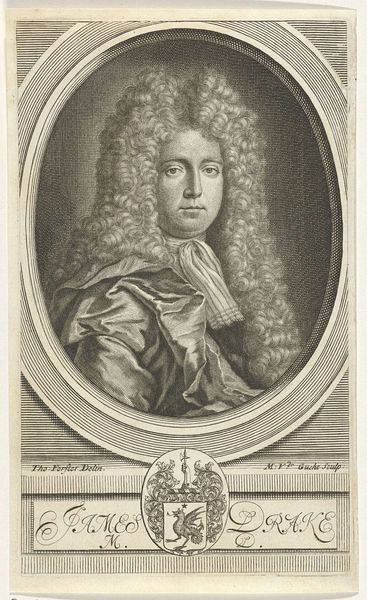
engraving
#
portrait
#
pencil drawn
#
baroque
#
old engraving style
#
charcoal drawing
#
charcoal art
#
pencil drawing
#
line
#
history-painting
#
engraving
Dimensions: height 248 mm, width 179 mm
Copyright: Rijks Museum: Open Domain
Curator: This engraving, *Portret van keizer Jozef I* by Pieter Schenk, made sometime between 1690 and 1713, strikes me as a potent example of Baroque portraiture. Editor: It's impressive, the level of detail Schenk achieved with just engraving. What’s most striking to you about this work? Curator: What interests me is how this portrait utilizes materiality to construct and reinforce social hierarchies. Think about the laborious process of creating an engraving like this. The skilled labor, the precise tools…it's all a means of visually embodying power. The very act of making becomes a display of imperial wealth and control. Editor: I see what you mean. The wig itself looks incredibly time-consuming to render with such detail, further highlighting that display. Curator: Exactly! The wig isn't just fashion; it's a carefully manufactured symbol. And consider the circulation of these prints. Were they intended for a broad audience, or a more exclusive group? How does that affect their function as a tool of social control? Editor: So, the material – the engraving itself – and its potential distribution, played an important role in shaping its message? Curator: Absolutely. It's not just about the image of the Emperor; it's about how that image was produced, disseminated, and consumed within a specific social and economic context. This piece allows us to consider the artist’s labour and technical ability as active signifiers of imperial power. Editor: This focus on the process and the social impact is giving me a completely new way to think about art! I was only thinking about the art piece. Curator: Right? It's important to consider those things and see beyond the surface representation. Every artwork has an existence beyond its creation.
Comments
No comments
Be the first to comment and join the conversation on the ultimate creative platform.
